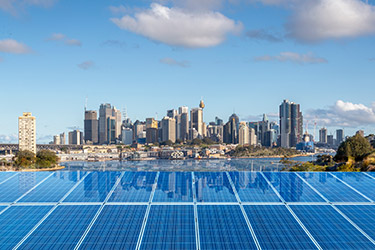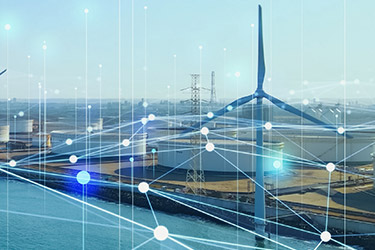Solar Farm Control Optimisation: How to prevent your solar plant revenue decline
Marc Purvis, Published: September 23, 2020 - Updated: February 16, 2021 (5 min read)
On the 15th of August 2020 at 10:00:00 AM, Trading Interval 5, the Wholesale Electricity Market (WEM) Balancing price became -$1000/MWh. Trading Intervals 8 and 9 were also -$1000/MWh. August 15th proceeded to produce 18 negative price intervals1.
Generators exposed to the balancing price who continued to export power into the South West Interconnected System (SWIS) during this interval, instead of being remunerated for their service, were charged $1000 per Megawatt Hour. To put this in perspective; if you were operating a 100 Megawatt merchant facility, trading intervals 8 and 9 alone could have cost you $100,000.
As electricity grids modernise and grapple with reliability in the face of changing grid conditions and technologies generation assets are required to adapt in-step with market operators or face the potential economic consequences.
Solar farm operators can participate in different markets in order to monetise their renewable assets. Common forms of monetisation can include:
- Large Generation Certificates (LGCs)
- Power Purchase Agreement (PPAs), or
- Merchant wholesale market participation (balancing price, ancillary services).
The complexity and depth of these and other markets is beyond our scope here but knowledge of their existence is important to understand the general foundations underpinning solar farm monetisation.
Establishing Power Purchasing Agreements (PPAs) with large energy consumers is a popular arrangement which can guarantee stability of revenue at known prices into the future. Solar farms can often sell a portion of their energy production under a PPA while using any remaining capacity to participate in the wholesale market. Solar farms not operating under a PPA or other agreement are largely vulnerable to the whims of the balancing price.
As grid conditions change and evolve with changing market rules, ailing infrastructure, and increased renewable penetration, it is becoming increasingly important to be able to modify the export characteristics of solar farms. Traditionally, the easiest and most cost-effective way to operate a solar farm is to allow the farm to operate at its maximum real power capacity at a fixed power factor while observing the constraints of any connection agreement. Control systems operating these fixed power arrangements are mainly concerned with managing sub-systems rather than optimising renewable penetration with respect to market conditions. The control systems are also not usually amenable, in any practical sense, to implementing the more modern protocols required to communicate with the Wholesale Electricity Market (WEM) or the National Electricity Market (NEM).
Solar farms are typically classed as non-active, non-scheduled generators. Merchant solar farms in this class are subject to the fluctuating WEMs-balancing price. The WEM splits the day into 48, 30 minute intervals for reporting and interfacing purposes. During times of low demand with excess generation capacity, the balancing price can go as low as -$1000/MWh. Interfacing to the AEMO to retrieve the balancing price allows a solar farm to reduce its power output if a negative price interval is forecast in the balancing report. Knowing the balancing price ahead of time allows the control system to make informed economic decisions when controlling the power output of the solar farm.
The purpose of the negative balancing price is to incentivise participants to stop or reduce power production during these intervals. The negative balancing price is an indication that the market operator has recognised an imbalance of demand and supply. The grid needs to remain within a tight frequency and voltage band to ensure stability and reliability2. The low demand coupled with a high reserve supply poses a risk to the stability of the network, thereby triggering mechanisms used to incentivise operators to reduce supply to ameliorate any risk of instability. Solar farms reducing their output during these negatively priced intervals are not only assisting the market operator but are optimising the financial performance of the asset by curtailing power production during these negatively priced intervals.
AEMO’s WEM interface
The WEM interface is defined by AEMO in WEMs REPORT AND WEB SERVICES SPECIFICATION. The service is built upon the Simple Object Access protocol (SOAP) interface which is accessible via Hyper Text Transfer Protocol (HTTP) requests. The access to the interface is secured by TLS encryption. Prior to a HTTP SOAP request a TLS handshake utilising x.509 encryption certificates occurs which verifies the identity of both parties and is used to encrypt the traffic between them. The SOAP protocol uses a WSDL (Web Services Description language) file to define the methods and arguments used to interact with the web service. Using this service the balancing price report can be retrieved by a control-system or control system adjunct.
As a system integrator, SAGE Automation is well-versed in the diversity and constraints of legacy control systems. There is an increasing demand to introduce new functionality reliant on newer communications protocols and security standards without completely replacing existing infrastructure.
The downtime, risk, and capital expenditure involved with such upgrades is usually too costly a burden to bear. SAGE Automation can leverage existing industrial communication protocols supported by legacy control systems as an interface point to inject real-time information from external sources. With minimal, or no changes, to an existing codebase, SAGE Automation can upgrade these systems to adapt to evolving market conditions. Utilising virtual price cloud (VPC) and other similar services it is possible to modernise a control system without purchasing any new hardware at all.
1 AEMO Balancing Summary: http://data.wa.aemo.com.au/#balancing-summary
2 Western Power Technical Rules: https://westernpower.com.au/media/2312/technical-rules-20161201.pdf
Watch SAGE Automation Principal Engineer - Energy, Samantha Kali, present on Microgrid Integration Solutions at the 2020 International Microgrid Conference.









